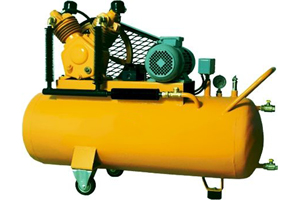For non-destructive testing, NDT is the abbreviation of Non Destructive Testing. It is intended here that the type of examination carried out without damaging the integrity of the material or part to be tested and inspected. The validity of non-destructive testing is based on the results of previous non-destructive testing.
Non-destructive testing methods with the invisible defects and defects in the materials or defects and defects on the surface of the materials are tried to be detected.
Nondestructive testing The purpose of using these methods is:
· With this method, defects or defects in the materials are revealed.
· The amount of another material contained in a closed material can be measured.
· Paint thickness on metal surfaces can be measured.
· For materials in which several parts are mounted, the states of the assembled parts can be determined.
When performing non-destructive testing, during ultrasonic testing or industrial radiography, in general, ultrasonic sound waves or high energy rays of very small wavelengths such as X-rays or gamma rays are sent to the area to be examined.
Briefly Non-destructive material inspectionis a type of examination which is carried out without damaging the examined materials and it is made to obtain information about the dynamic and static structures of the material. The non-destructive testing method is used to detect, for example, cracks caused by abrasion, a gap in the internal structure and the like during the manufacture of materials or after a certain period of use. There is no need to take a sample of the materials during this inspection.
There are several methods of non-destructive testing. These methods are applied in different ways and with different physical principles. This is mostly shaped according to the type of material examined and the type of error sought. The methods applied are: eye examination, liquid impregnation examination, eddy currents examination, magnetic part examination, ultrasonic examination and radiographic (x-ray) examination.
The periodic inspection and control of the compressors is a requirement stipulated by the Occupational Health and Safety Law No. 6331. According to the Regulation on Health and Safety Conditions of Work Equipment issued on the basis of this law, compressors accept compressors in the group of compressed air tanks. If no other period is foreseen in the relevant standards, periodic inspections of the compressors are required at least once a year.
If inspection and control operations are to be carried out by non-destructive testing methods, these checks should only be carried out by engineers, technicians or technicians trained in accordance with the TS EN 473 standard.
“TS EN 473 Non-Destructive Testing, Qualification and Certification of Non-Destructive Testing Personnel, General Rules” standard was issued by Turkish Standards Institute in 2010 but it was canceled in 2013.TS EN ISO 9712 Qualification and certification of non-destructive testing (NDT) personnel has been published.
TÜRCERT certification body, as well as conformity assessment and certification studies, testing and inspection services also provides. If there is a need to get more information about non-destructive inspections of compressors or to have these inspections done, TÜRCERT certification institution is ready to meet the needs of the enterprises with its experienced managers and employees.

